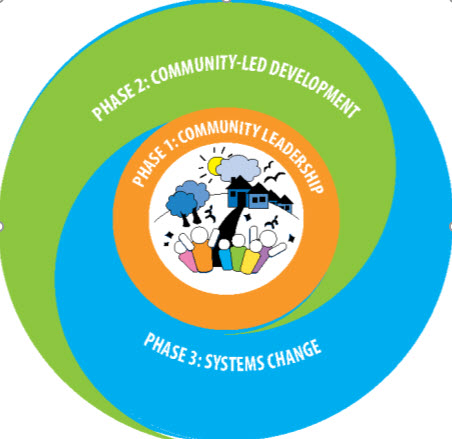Three Paths to Help Conquer the Chaos of Change

I’m having a tough time finding many straightforward workplaces these days. My future-focused leadership work often results in me landing in organizations where solutions are complicated and messy. Not only that, the need for change is sometimes driven by a belief (usually that of the funders, directors, or elected officials involved) that there is a one-size-fits-all, secret sauce solution that can be implemented within several months.
Needless to say these days it often takes much longer to check anything off my to-do list. Sigh.
Without a doubt this drive for change is due to our constantly changing, hyper-connected world, and a growing recognition that the systems built for the industrial era are broken and no longer valid. This is complicated by a growing understanding that hierarchical, command-and-control, top-down leadership simply doesn’t work anymore. What is becoming increasingly clear is that the challenges are far too complicated for anyone individual or organization to solve on their own. As a result, we need to invest time and energy in the development of trusted relationships, networks and webs. This new infrastructure is the essential foundation for any change we need to put into place.
All of this is further compromised by the fact that not everyone is wired for leading the often messy system-thinking and innovation that will be required. That’s not a judgment as much as it is an observation. And ultimately it truly is a good thing because chances are that if you’re not wired for transformational leadership you are essential for what experts call transactional leadership. Transactional leadership is more about keeping the ship afloat and everything flowing smoothly and goodness knows that is just as important.
But, by far the greatest challenge, is the hard work and creativity it takes to make the complicated simple as strategies for change are implemented. That’s the piece that often trips me up.
However, as the result of being blessed with previous learnings and some not so insignificant funding for boots-on-the-ground projects across the country focused on transformational change, here’s my best shot at explaining three well tested paths for implementing any kind of systemic organizational, neighbourhood, or community transformational change.
We know if an organization, business, neighbourhood, or community wants to be stronger, more vibrant, and positioned for the future, it must have stakeholders (employees, citizens, clients, partner organizations, funders, etc) who are active, creative, and engaged. To make that a reality, three paths are essential.

The first path on the journey to transformative change is one that focuses on prioritizing the support, learning, and growth of a cohort of diverse leaders. And, by leaders we’re not talking just about those with the formal position, because leadership is a behaviour more so than a title. That means everyone needs to think of themselves as a leader. It should come as no surprise to realize that the development of these competencies will require new skills and abilities and an ongoing investment in training, coaching, and the development of a culture of learning (and sometimes unlearning). The result of this investment will be a diverse cohort of leaders at all levels who have the competencies necessary for implementing innovative change.
The second path, driven by that cohort of leaders, needs to focus on a short term, cross-sectoral, stakeholder-driven initiative or project(s). It needs to be something that everyone agrees is important as well as be one that requires collaboration across departments, organizations, sectors, and silos.
This short term project contributes to the hope, spirit, and potential impetus for change by illustrating what can happen when everyone works together. Think of it as quick success or as low-hanging fruit.
Businesses, organizations, neighbourhoods, and communities committed to change have often chosen projects related to children and youth, recreation, parks, arts, culture and heritage as they are typically both an inspiring and non-threatening place to start. Ultimately it is not the project or initiative itself that is important as it is more about the travel together along the path and the foundation of trusted relationships that result. These trusted relationships, networks, and webs form the foundation or basis of ANY kind of meaningful change.
The third path involves the implementation of a longer term, stakeholder-driven, adaptive plan that is future-focused and addresses individual, social, economic and environmental well-being. Ultimately this path is as much about outcomes and values. It is this collective, stakeholder or community-owned plan that is essential for inspiring stakeholders to engage and own the meshwork that will be required for transformative change.
Not a quick fix but if it were easy, everyone would be doing it.
Just keep in mind that ultimately change requires three paths - investing in the development of a local cohort of diverse leaders (with or without a title), a short term project or initiative, and a longer term value-driven future-focused plan. Just keep in mind that your job as a leader is not to solve today’s complex issues, it is instead about call the meeting.
A diverse leadership team, a low hanging fruit initiative to start, and community-led planning. Maybe its not so complicated after all.
Posted on 09-17-20
Next entry: I’m Blaming It On The Vision Board
Previous entry: Thinking About Our Community as a Fractal?

 Brenda Herchmer is the owner of Grassroots Enterprises, a community development consulting company.
Brenda Herchmer is the owner of Grassroots Enterprises, a community development consulting company.